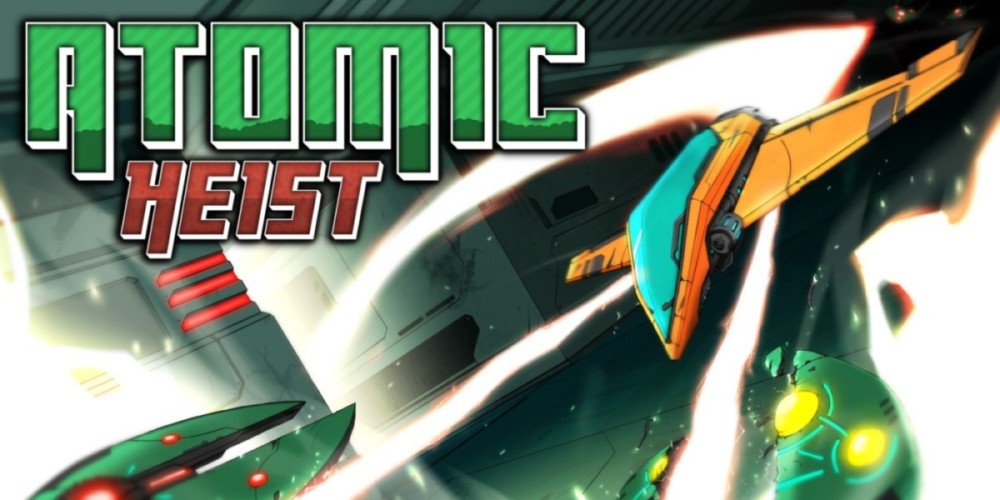[Review] Atomic Heist – Nintendo Switch
Atomic Heist
Developed and Published By: Live Aliens
Category: Roguelike Shooter
Release Date: 09.13.2019
Whenever a developer comes forward naming a specific genre early in the description of their game, it sets the tone for what’s to come. That is, a player should know what they’re getting into. But in a game as repetitive and difficult as Atomic Heist, that seldom breaks from the formula, do they any right to complain? When there’s no payoff or incentive to continue, yes, they sure do. Indeed, the folks at Live Aliens weren’t kidding. What they’ve developed in Atomic Heist is another spin on the roguelike genre, but not much more.
To start, Atomic Heist is hard. It is an unforgiving game. I bit off more than I could chew on just the normal setting, before coming to my senses and turning the difficulty down. It was a compromise I was willing to make. Enter into a roguelike game, where levels are procedurally generated and (nearly) all upgrades are lost in death, expect to play a roguelike game. And in the spirit of fairness, maybe they’re just not for me, but I gave it a shot. I was even looking forward to it. The idea of a sci-fi, roguelike shooter where a player must retrieve a leaking atomic core sounds fun. Yet, as with so much of Atomic Heist, what sounded good in abstract often failed in execution.
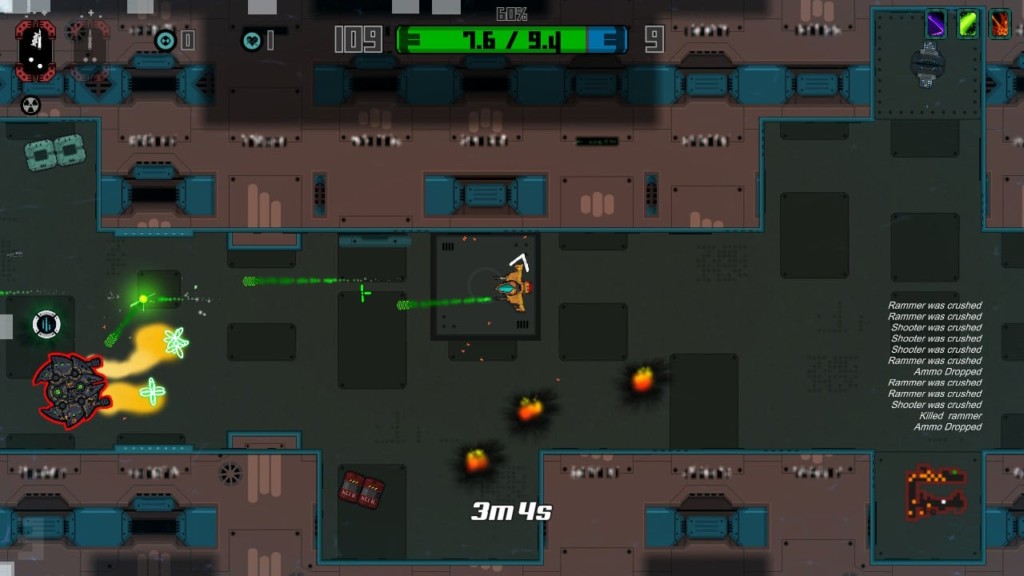
But we before analyze where it failed, let’s give credit to Atomic Heist’s few successes. First of all, the gameplay is well suited to the Switch. My longest sessions never ran more than 15 minutes at most. When things were clicking, I was breezing through levels. Even if they weren’t, death came swift, and I was granted a chance to redeem myself in a few short moments. This style of play lends itself to the Switch as a portable. Pick it up, die a few times, and take a break before trying again or throwing the console against a wall.
At one point early on, it was even addicting. For masochists, difficult games push you beat them. They’re begging for it. The taste of a moral victory wets our appetite for more. After all, defeat is but a lesson in games like Dark Souls, right? My first few runs through Atomic Heist even made the promise–empty as it was–of something worth fighting for: a new type of ammo, an upgrade to health, a new avatar. However, the veneer grew thin as my progress slowed and experience earned through the grind never amounted to anything. Yeah, it wasn’t too long before I could select a new avatar, but a skin change hardly seems like an ample reward for the work put in. It wasn’t worth the frustration.
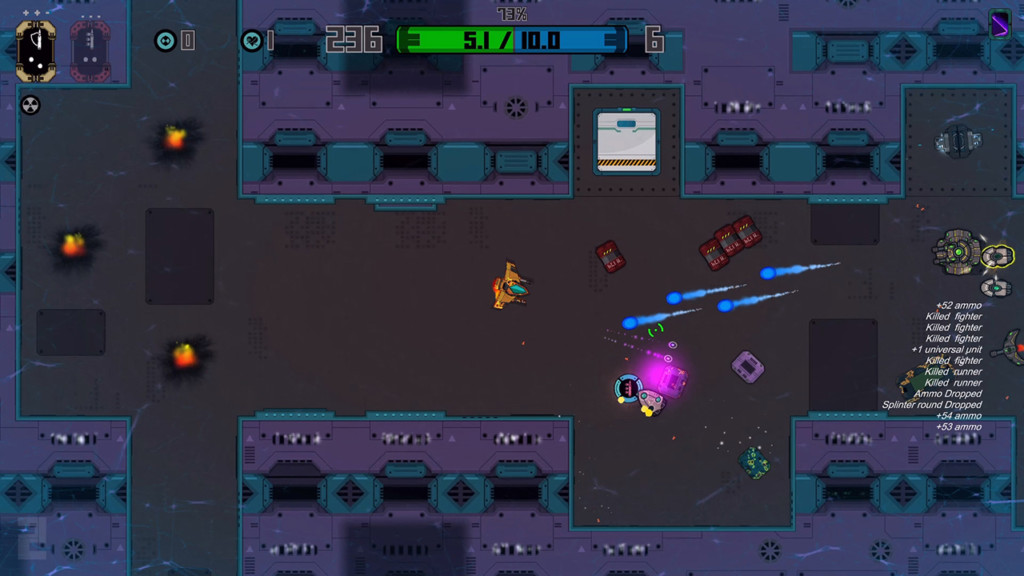
Each rebirth provided a chance to do things differently, but with procedurally generated levels of narrow hallways, dead ends and all kinds of traps, I felt like a couldn’t establish a tried and true method of advancement. Sure, each level maintained its familiar set of enemies, dispersed in accordance with difficulty, but the proper ammunition needed to fight them wasn’t always there. As I progressed, shortcuts appeared to cut out the time spent grinding away, yet I never had enough upgrades to take on the more powerful enemies at the end of the tunnel. To make things even more complicated, I was constantly seeking “radiation scrubbers” to clean off the radiation which was slowing eating away at the exterior of my ship. This feature of the game only added to the chaos of a firefight as I had to not only avoid lasers, but to do so under the pressure of a countdown to death by radiation.
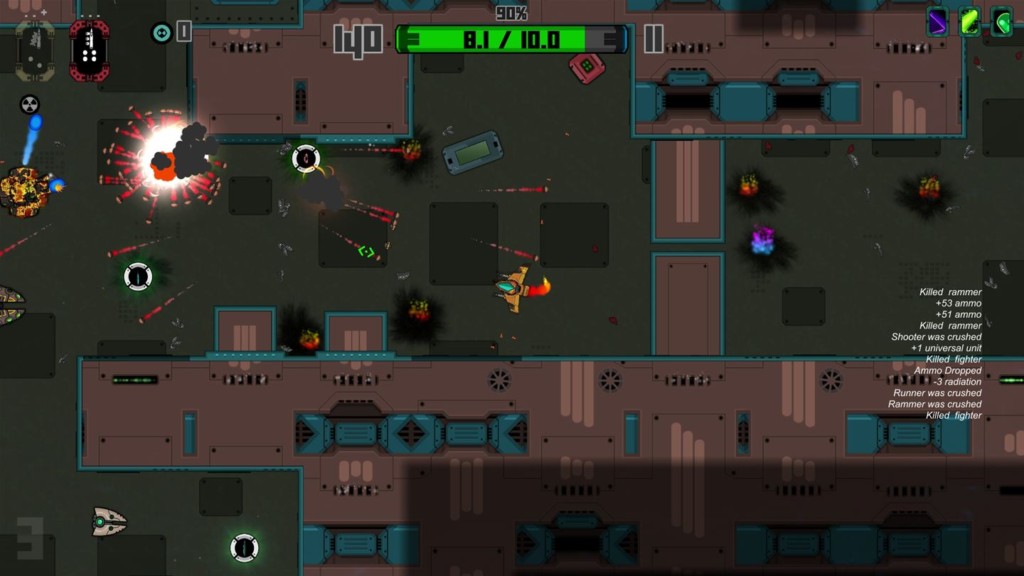
In an attempt to speed up play and help me on my mission, upgrades were available every time I cleared a level of enemies. A few became permanent later on. However, I had to make a comprise with each step forward. Do you want 20% less enemies? You need to give up 15% of your health. How about 50% extra damage? Great, but ammo drops shrink by 40%. Atomic Heist gives the player many ways to play while at the same time reducing the likelihood they’ll have to further experiment with any one in particular.
Again, this is due to its roguelike formula, but when all of the sections of the base you’re breaking into look identical except for some new colors and more difficult traps, the formula gets old. Without pretty things to look at, a lack of captivating music that doesn’t sound like standard sci-fi menu tunes, or even a reason to plow onward (there is next to no story or narrative), the joy of challenging yourself for the sake of it fades. At times, I found myself simply grinding for the luck of the draw, praying for a level where I wasn’t attacked immediately at the spawn point. At others, I played out of spite after dying a cheap death because an enemy who was impervious to my ammunition had corned me.
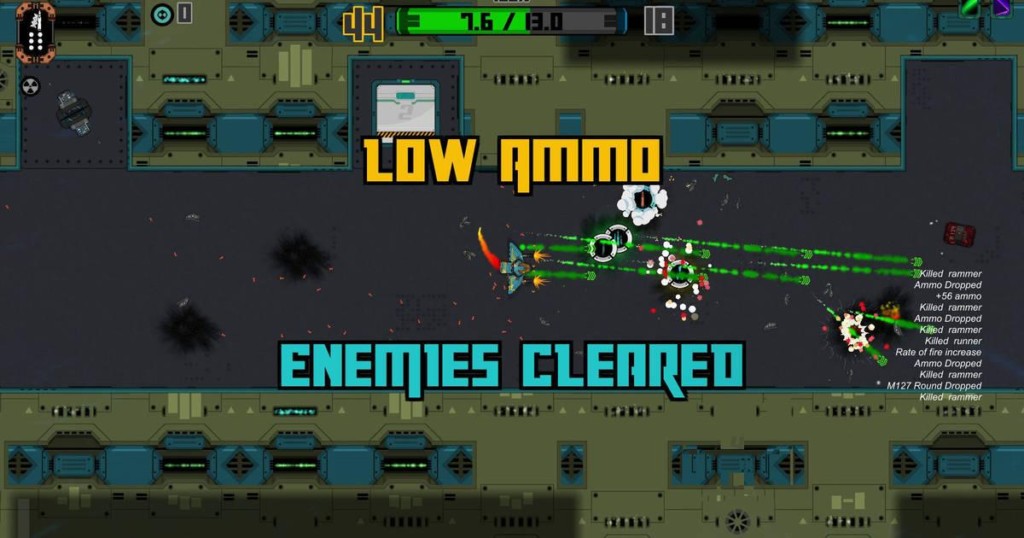
What Atomic Heist does well are short, quick sessions: jump in, blast through a few levels, die from the splash of an explosion, then try again later. It’s a lot of fun when played with a short memory, which it mercifully encourages. However, this is also how the game feels undeveloped, like it ran out of ideas after its initial execution of shoot and roll the dice. Without much of a reason to continue grinding away, besides a new face to your pilot and some upgrades that take as much as they give, Atomic Heist gets old fast. Perhaps it would find a more comfortable home on a phone, a device built for these kinds of games, one that’s easier to throw.
TL;DR: Atomic Heist’s repetitive, underdeveloped gameplay and lack of incentive doesn’t justify its difficulty spike.






